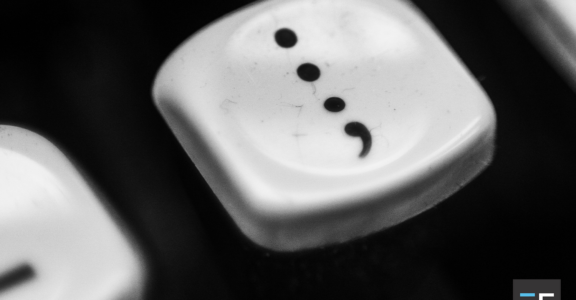Adjectives serve a vital function in language. Without them, the world would be a flat, boring place. Want proof? Read the previous two sentences again—this time without adjectives:
Adjectives serve a function in language. Without them, the world would be a place.
Yawn. What frightfully boring sentences! It’s a good thing we have adjectives to add color, dimension, character, purpose, and much, much more. If you don’t yet know what an adjective is, you’re in for a treat—a delicious treat. Read on to learn the basics of adjectives as well as their quirks and traits.
What are adjectives?
First off, let’s answer two important questions: What is an adjective? What are adjectives good for? An adjective is one of the eight basic parts of speech along with nouns, pronouns, conjunctions, verbs, adverbs, prepositions, and interjections. An adjective’s chief duty is to modify nouns, and it is a key component of your typical description. In the below examples, the adjective is in bold.
She wore a blue hat. (Blue modifies hat.)
The movie was OK. (OK modifies movie.)
That was a beautiful sunset. (Beautiful modifies sunset.)
Kinds of adjectives
What are adjectives? Adjectives are multifaceted. If you take nothing else from this post, understand that adjectives provide information about nouns. However, different kinds of adjectives do this in different ways. Keep in mind that the words below aren’t always adjectives—only in certain contexts. If it’s modifying or providing more information about a noun, it’s an adjective.
Descriptive
First up are descriptive adjectives. These are the adjectives you know and love. They provide more information about a given noun, including its color, attributes, behavior, origin, material, or size.
- This taco is spicy.
- My computer is slow.
- That tree is full of green leaves.
Quantitative
Quantitative adjectives modify their nouns by indicating the number or quantity. In certain contexts, a number can be an adjective.
- I have three dogs.
- I wish I had more money.
- My sister is on her second slice of pie.
Demonstrative
Demonstrative adjectives help identify the nouns they are modifying. Demonstrative adjectives include words like that, those, these, and this.
- These adjectives are easy to identify if you know how to look for them.
- This fettuccini alfredo is delicious.
- That room is for VIP members only.
 Possessive
Possessive
As the name implies, possessive adjectives assign possession to the nouns they’re partnered with.
- My 1994 Ford Taurus is still going strong.
- Her word is her bond.
- Your dog is well behaved.
Interrogative
Interrogative adjectives are often used when the speaker is looking for certain information. These adjectives include words like what and which.
- Which member of the Beatles is your favorite?
- Whose jacket is hanging in the hall closet?
- What TV shows do you like to watch?
Distributive
A distributive adjective usually modifies a singular noun, and they include words like each, both, neither, any, and every.
- Neither boy would confess to eating my pudding.
- Every romantic comedy I’ve seen has made me cry.
- I’ll read any book written by Stephen King.
Articles
The words a, an, and the are all articles. Articles are technically their own part of speech, but they fulfill a similar purpose to adjectives in that they describe nouns; in that regard, you can think of articles as honorary adjectives.
- The skies should be clear tonight.
- I’d love to adopt a kitten.
- It would be an honor to officiate your wedding.
Degrees of adjective
Now you have a basic answer to the question “What is an adjective?” However, there’s much more to learn about kinds of adjectives. Most adjectives fall into one of three degrees: positive, comparative, and superlative depending on whether you’re simply describing something, comparing two things, or comparing more than two things. Check out the degrees of adjective below.
Positive
A positive adjective offers no comparison; it’s just a simple adjective.
- The weather is cold.
Comparative
The comparative form of an adjective implies or explicitly states a comparison.
- Today is colder than yesterday.
In this sentence, the adjective colder describes today as compared with yesterday.
Superlative
The superlative degree denotes an extreme within a group.
- Yesterday was the coldest day of the year.
In this sentence, the adjective coldest describes yesterday as an extreme within a group—in this case, in relation to all other days of the year.
Degrees formed with irregular adjectives
Most adjectives are easy to adapt to the various degrees described above (cold, colder, coldest; hot, hotter, hottest; big, bigger, biggest; etc.). However, some adjectives change when used to describe different degrees. In the below examples, note how the adjective changes form with each degree.
- Positive: This is a bad movie.
- Comparative: Watching this movie is worse than going to the dentist.
- Superlative: This is the worst movie I’ve ever seen.
Here are a few other adjectives with irregular comparatives and superlatives:
- Little, less, least
- Much, more, most
- Good, better, best
Though it may be a pain to remember irregular forms, it’s worth it to avoid atrocious mistakes like “gooder.”
What is an adjective clause?
What are adjectives? Words that describe nouns, right? Well, an adjective doesn’t have to be a single word. An entire clause can serve as an adjective—this is called, as you might guess, an adjective clause. A clause is a section of a sentence that contains its own subject and predicate. See the below examples of adjective clauses for a better understanding.
My friend, who is a very good swimmer, easily beat me in a race.
In this sentence, who is a very good swimmer is an adjective clause that describes my friend.
I’m looking for a roommate who likes to keep things clean.
It’s the same with this sentence—who likes to keep things clean modifies roommate.
Proper nouns as adjectives
Proper nouns designate specific things (as opposed to generic things) and are usually capitalized. For example, America, Raphael, and Halloween are all proper nouns. The corresponding generic terms for these proper nouns would be country, painter, and holiday (set in lowercase). In the examples below, you’ll find the above proper nouns used as adjectives. Note that proper nouns may change slightly as they adapt to the role of adjective.
- I only buy American cars.
- She collects Raphaelesque paintings.
- A ghost is probably the easiest Halloween costume to make.
Note that proper nouns remain capitalized when used as adjectives.
Placement of adjectives: Do adjectives come before or after the noun?
If you’re learning English as a second or third language, you might be confused by the placement of adjectives in relation to their nouns. Generally speaking, adjectives come before the nouns they modify. For example, you would say, “That’s a big dog,” not “that’s a dog big.” However, there are certain situations where the adjective comes after the noun it modifies. These are called postpositive adjectives.
Emphasis
When the adjective is used to indicate a special emphasis, it may come after the noun it modifies. This is generally considered an archaic way to use adjectives, but it isn’t completely gone from modern speech.
- The city held a parade for the soldiers victorious.
- I took the road less traveled.
- I want to buy a condo in Chicago proper.
Idiom
There are instances where adjectives come after the nouns because that’s how certain phrases have always been expressed. Take, for example, words and phrases like court-martial, attorney general, beef Wellington, and notary public.
Appositive
Adjectives used in apposition—that is, used to stand in for a noun—often come after the noun they stand in for and modify. These adjective phrases are usually set off by commas or dashes. Take a look at these examples:
- The boy, famished, ate the whole rack of ribs.
- The city, bright and beautiful, is a popular tourist destination.
- He wore his new suit, custom made and so flattering, to the wedding.
Is there a correct order of adjectives?
Over the ages, the English language has developed some unspoken rules. One of these is a clear order of adjectives. Native speakers automatically list adjectives in the proper order because it sounds natural to them. Still, a clear list can be helpful for native speakers and English language learners alike.
- quantity (twenty-seven, a lot, many)
- opinion or quality (good, bad, OK)
- size (big, small, tiny)
- age (old, new, young)
- shape (circular, misshapen, rectangular)
- color (blue, reddish, yellow)
- origin (American, Latin, Filipino)
- material (gold, cotton, wooden)
- purpose (shaving, writing, culinary)
With this list in mind, you could theoretically write a sentence like “I bought thirty-six high-quality big new circular blue German rubber river tubes.” If you try to switch the order of any of these adjectives, you’ll find that it just doesn’t sound right (“river blue tubes,” “German thirty-six tubes,” “rubber new tubes.”). Of course, no self-respecting writer would stuff that many adjectives into a sentence. Still, it’s nice to know you can.
Adjectives and punctuation
Adjectives have an interesting relationship with certain types of punctuation. Fortunately, it’s not too complicated to learn these few simple rules and tricks.
When do you put commas between adjectives?
When it comes to adjectives and commas, you’ll need to know about coordinate adjectives, or related adjectives that appear in a sequence and modify the same noun. According to The Chicago Manual of Style, coordinate adjectives should be separated by commas.
- The sweltering, oppressive heat
- The tiny, insignificant bug
- The delicious, savory pie
To determine whether two or more adjectives are coordinate, swap their order and replace the comma with and. The first example above contains coordinate adjectives because “oppressive and sweltering heat” still works. However, “delicious” and “berry” are not coordinate adjectives because it sounds odd to have a “berry and delicious pie.”
Think of “coordinate” as another word for “related.” “Oppressive” and “sweltering” are related because they both describe the quality of the heat; whereas “berry” and “delicious” are not related because “berry” describes the material and “delicious” describes the quality. Using the proper order of adjectives discussed above, the correct phrase would be “the delicious berry pie.”
When do you hyphenate compound adjectives (a.k.a. phrasal adjectives)?
A compound adjective is two or more words that come together to modify the same noun. Examples of compound adjectives are in bold below.
- Yellow-bellied scoundrel
- Light-blue sweater
- Shark-infested waters
Hyphens are used in compound adjectives to prevent ambiguity. If the hyphen were absent in “light blue sweater,” the reader might misunderstand the sentence, assuming that “light” describes the sweater’s weight rather than the lightness of the blue. “Light-blue sweater” prevents such a misreading.

It’s important to note that hyphens aren’t present in all compound adjectives. For example, adverbs that end in “-ly” are not hyphenated when they form a compound adjective.
- Lightly seasoned steak
- Dimly lit room
- Beautifully executed pirouette
There’s yet another rule about adjectives and hyphens. If a term exists in the Merriam-Webster dictionary without a hyphen, then there’s no need to add the hyphen when that term is used as an adjective. For example, since “high school” is listed in Merriam-Webster, you can write “high school student,” without the hyphen. However, since the term “light blue” isn’t listed in the dictionary, you need a hyphen when you write “light-blue sweater.”
Adjectives vs. adverbs
If you’re Googling “What are adjectives?” then you’re probably curious about adverbs as well. Adjectives and adverbs both modify other words, and they both start with “ad,” but that’s where the similarities end. Adjectives modify nouns, while adverbs modify verbs, adjectives, and other adverbs. See the examples below.
Adverb modifying verb:
She ran hard. (The adverb hard modifies the verb ran.)
Adverb modifying adjective:
She went on a particularly tough run. (The adverb particularly modifies the adjective tough.)
Adverb modifying adverb:
She ran very hard. (The adverb very modifies the adverb hard.)
Thanks to adjectives, the world is a fun, colorful, wonderful place. The next time someone asks you “What is an adjective?” you have an answer. Not only that, but you can go on about proper nouns as adjectives, compound adjectives, kinds of adjectives, adjective order, adjectives vs. adverbs, and anything else your questioner might like to know (or not).









